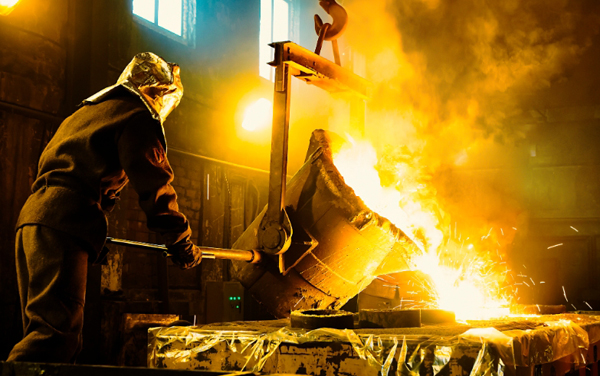
Calcium refining agents play a key role in the steel industry. They can scavenge oxygen and sulfur, increase the fluidity of molten steel, and control non-metallic inclusions in steel and cast iron.
The current production method of metallic calcium is through aluminothermic electrolysis using CaCl2. This process has many shortcomings, such as low product purity, high energy consumption, and poor cell efficiency.
Calcium plays an essential role throughout the entire steel-making process. It is added in the electric arc furnace (EAF), blast furnaces, AOD converters and refining ladles as calcium oxide or calcium hydroxide. It functions as a purifier in eliminating impurities, desulfurizing, removing phosphorus and dephosphorizing the molten steel and as a flux to form slag. It also saturates the slag in magnesium oxide to extend the useful life of the refractory lining of the ladle or converter.
Calcium is a particularly effective desulfurizing additive in blast furnaces and AOD converters due to its high basicity and low iron oxide content. It reacts exothermically with the slag to reduce its viscosity without chilling it; removes most of the soluble sulfur in liquid steel by converting it to calcioaluminosilicates and therefore prevents oxygen pick-up of the molten metal. It also modifies the composition, size and structure of the oxides, sulfides and silicate inclusions in the steel to improve its hot workability.
Steel slag is a waste material and it has a large volume. It contains valuable components, such as calcium and magnesium oxides with high basicities. In addition, it is an expansive slag, because the free lime and magnesia hydrate slowly and cause expansion of the slag for a long time.
A complete separation of slag from the molten iron is essential for easy treatment of the latter in subsequent steps. Various methods for this purpose have been used. One of them involves skimming the slag with mechanical force, but it is impossible to completely separate all the slag from the molten iron in this way.
Another method consists of adding fluidity modifiers to the slag before desiliconization and discharging it. In this way, slag with high fluidity can be formed. It is then possible to draw off slag with a slag cleaner for about 3 minutes before completion of the desulfurization and dephosphorization. This is not only economical but also ecological.
When casting a metal, it is important that the molten material flows into the mold and solidifies into a defect-free part. This is called castability and it has a huge impact on the time, cost and quality of a finished product. Poor castability can result in high rejection rates and costly tooling, which can be a major setback for any project.
This is why many metallurgists choose to work with metals that have good castability. These are usually metals with lower melting temperatures and high fluidity. Having low melting temperatures also reduces energy consumption and environmental impact.
The castability of a metal also affects its ability to be heat treated. This process changes the crystalline structure of the steel and hardens it by quenching. Typically, the higher the hardness of a steel grade, the better its castability. This is primarily due to the alloying elements that are added to a steel mixture. Some of the most common alloying elements include manganese, silicon and phosphorus.

Although not as popular as acetylene for cutting, welding and other industrial purposes calcium carbide (CaC) is also used as an economical hot metal desulfurizer. Unlike aluminium, ferrosilicon or silicon carbide it has the advantage of not chilling the slag; reacts exothermically to promote agitation and foaming of the slag (with minimal carbon pick-up); does not require a balancing lime addition as do aluminum-based additives; can be used with low-alloy, high strength steels that are susceptible to sensitization and other undesirable effects from excessive deoxidation; and is easy to handle for application in a continuous caster.
The addition of Ca in a steel ladle can help to increase the yield strength of the metal; that is, the amount of stress that can be applied to the material before it permanently changes shape. It can also be used to modify the composition, size and structure of oxides, sulfides and silicate inclusions in liquid steel (deoxidation and desulphurization); and it helps to eliminate nozzle clogging problems in continuous casting.

Write a Message